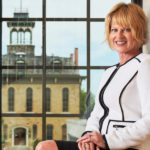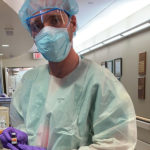Typically, at 11 a.m. on Thursdays, the Clarice L. Osborne Memorial Chapel would be packed with more than 100 students. A student band would lead the music, and students would sing aloud with enthusiasm. The energy would bounce off the walls. Afterward, attendees would eat lunch prepared by local churches. It was delicious, homemade food, and as many as 80 students would stay for lunch. It was a time of worship and fellowship.
But in March, all of that changed as Baker and the rest of the world made significant changes in their routines in response to the COVID-19 pandemic. Students were sent home to learn remotely, and when they returned this fall, many new procedures had been put into place. For chapel, that has meant meeting outside under a big tent on the south end of campus.
“We do have a song leader but are not singing along to the music,” Minister to the University the Rev. Kevin Hopkins said. “I invite the students to listen prayerfully to the music while they sway along or hum the tune. We are all masked and spread out under the tent. We are not able to serve lunch right now due to COVID guidelines.”
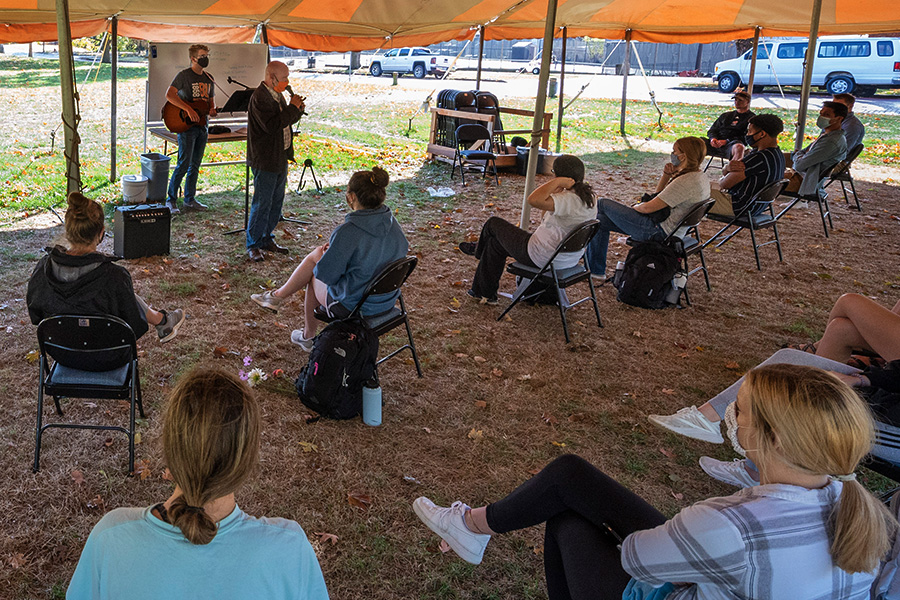
Baker students are navigating these changes and rising to the occasion—not just at chapel but with course work, athletics, extracurricular activities, and residence life.
“I am very proud of our students,” Hopkins said. “The energy level of our chapel services has definitely changed, but our students have adapted to the change very well.”
Up to the challenge
By late February, Dr. Darcy Russell, ’80, dean of the College of Arts and Sciences, said she could see from reading reports about the coronavirus that Baker was going to need to make a plan in case it had to close residence halls early. A task force was formed in early March, and Russell was charged with leading it.
“As a task force, we first decided that we would have online classes for two weeks following spring break so that students would not return directly to the residence halls after travel,” she said. “However, things changed at the state level, and we went all online for the remainder of the term.”
Russell said the transition to remote learning was a major undertaking for all students, faculty, and staff.
“Faculty basically worked all during spring break to move everything online for the two weeks after the break, and then they just tried to stay a week ahead of the students for the rest of the term,” she said. “They used Panopto to record lectures. They had Zoom office hours and Zoom classes. They used our learning management system, Moodle, to deliver information to students. It was a crazy time, but Baker University is blessed with a faculty that is so dedicated to its students that they all stepped up to the challenge.”
A second task force was formed in May to discuss how students could safely come back to campus in the fall. It included representatives from all schools, student life, facilities, development, admissions, marketing, academics, and athletics, Russell said. A student was also on the task force.
“For the fall, we started classes earlier than originally planned,” she said. “We canceled all breaks—no Labor Day break and no fall break—and we will be done by the Tuesday prior to Thanksgiving. Everyone will go home until after the New Year.”
Baker is offering a mixture of teaching modes, and outdoor classroom spaces have been created. Some classes are 100 percent remote learning via Zoom.
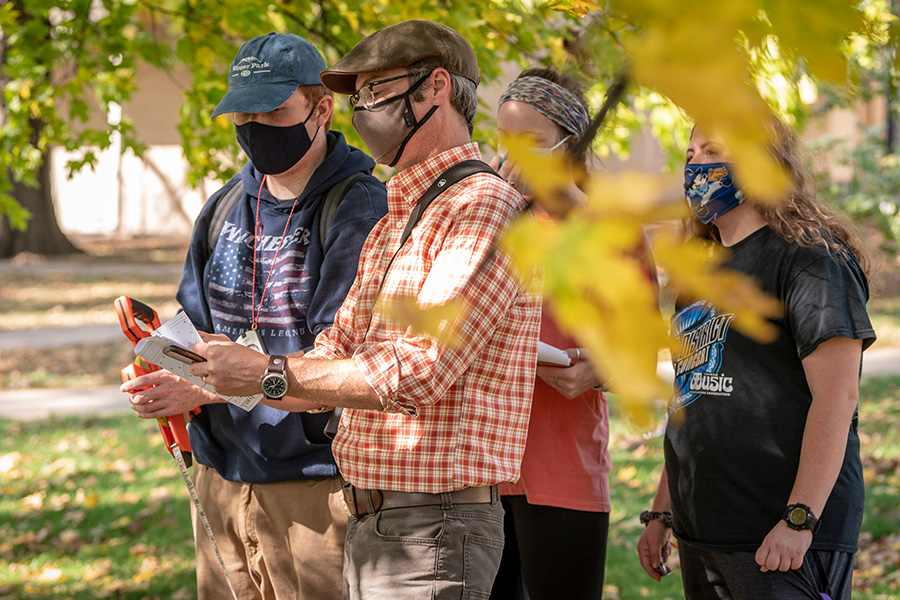
“Some classes are hybrid with some students in the classroom and others online since we needed to social distance, and some of our spaces were not large enough,” Russell said. “Labs were divided into two groups, and half of the students come for the first two hours and the other half for the second two hours. Then, both groups Zoom with the professor for their third hour each week to discuss the results. Lots of the smaller upper-level courses are fully in person.”
To provide hope
Dr. Cassy Bailey, dean of students, said the Office of Student Affairs has been in a state of constant change since mid-March.
“At the beginning, the change was made in response to an ever-changing world,” she said. “As we became more comfortable with a new normal, we understood that we were at a time to reinvent the process—from the mundane to innovative. For example, in April, we knew we needed to rethink the housing lottery. Although we were not on campus, we were planning for a fall—not only for administrative purposes but also to provide hope that we would have fall.”
Bailey said much of the innovation was provided by Randy Flowers, EdD ’19, assistant dean of students and director of student life, through the work he did to reinvent the orientation and enrollment sessions for new students that take place during the spring and summer. Typically, the Office of Student Affairs hosts new students and their families on campus, where they enroll in classes, tour campus, attend presentations, and eat lunch in the dining hall.
“Specifically, I was looking at how we were going to register new students to the university through orientation. I immediately started brainstorming the process we could use through technology and rebuilt every component of orientation. This required many presentations, recordings, and forms to be created.”
Randy Flowers, EdD ’19, assistant dean of students and director of student life
Flowers continued creating online resources for new and returning students, and staff developed posters, videos, and materials to inform students about university expectations when they returned to campus. They also requested input from Lawrence Memorial Hospital and Baker’s School of Nursing and developed procedures based on Centers for Disease Control and Prevention and Lawrence-Douglas County Public Health guidelines.
“All students completed required COVID training and quizzes,” Flowers said. “University-wide training was more over what COVID is, how to identify and how to prevent it, while the residence hall [training] was how to keep spaces clean, expectations for sanitizing and disinfecting, along with how to keep the community safe.”
By June, Flowers knew Welcome Week, a full schedule of group activities in August that introduces new students to campus and to each other and welcomes returning students back, would also need an overhaul. He researched new activities and ways to implement traditional events safely.
“We had a headphone disco dance party with circles painted on the ground so students were beyond 6 feet apart,” Flowers said. “We held events in Rice Auditorium for a live show, while offering a livestream outdoors in Hartley Plaza along with a Zoom stream in the students’ rooms. We took Rice Auditorium from nearly 700 students down to 70 students. Masks are always required at events.”
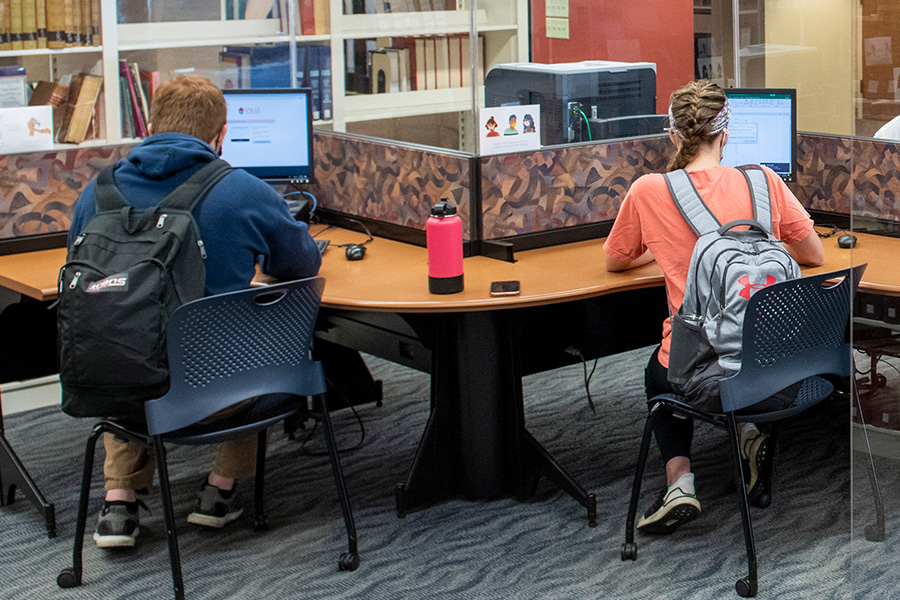
Flowers said staff members are working every day to create new events to keep students engaged on campus. A Senior Sunday online program was created to spotlight a different senior every week who shares a personal experience at Baker that has shaped their journey.
“We do Cooking with Chef Mike where students learn recipes to cook in their microwave, and materials are given to them,” he said. “We do online trivia nights on Thursday for cash prizes. We do our traditional events, too, such as hosting a comedian or magician, but significantly fewer because they require extensive precautionary practices to execute.”
Theatre students are resilient
Associate Professor of Theatre Tom Heiman says nothing has been affected by the pandemic more than the live-event industry. Capacity of Rice Auditorium has gone from 660 to 94, with 57 seats on the main floor, and the building is used as classroom and rehearsal space for band and choir.
“Our first show was outside following guidelines we developed from researching best practices from several live-event research studies,” Heiman said. “The clear masks we used were developed for working with the hearing impaired. The audience could see the actors’ faces while still being safe. Our live audience was only Baker students and employees, but we have joined the streaming world with our first show and will continue to do so after the pandemic.”
Assistant Professor of Theatre Emily Kasprzak said the department is selecting shows that are flexible to be performed in nontraditional ways. In addition to clear masks, performers keep a spare mask in their pocket while performing, and scenes have been rethought to keep students socially distanced.
“We knew we wanted to continue to do theatre, but theatre is gathering and projected speaking,” she said. “So, we started looking for shows that could be performed outdoors and that would be able to transition online at a moment’s notice.”
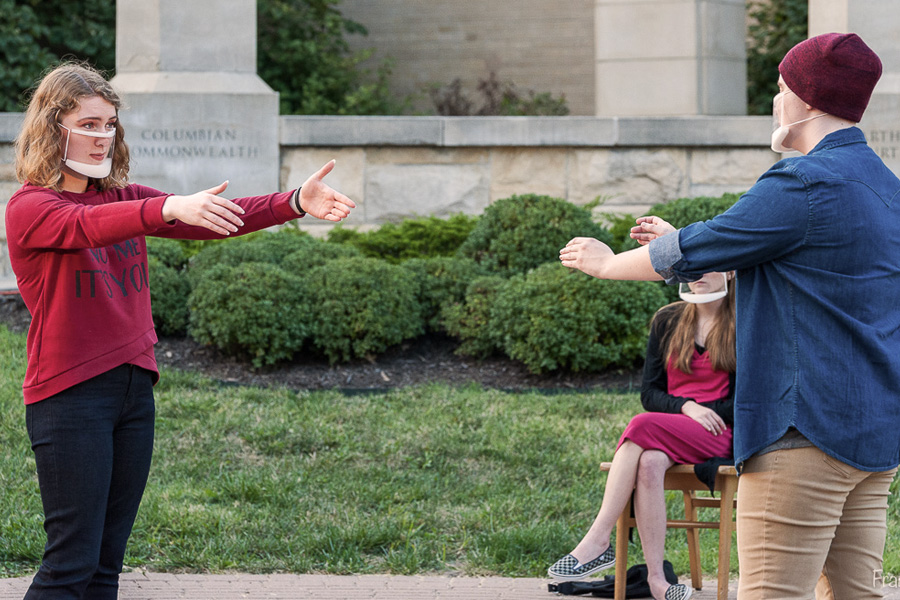
Casts and crews have been limited to about 10 people, Kasprzak said. Rehearsals started out as virtual and then transitioned to in person but in 30-minute increments. Students rehearse for 30 minutes, leave the room for 5 minutes, and then come back to rehearse another 30 minutes.
“That thinking is based on research about how long we can be together indoors before clearing the air,” she said. “I’m happy to say not a single actor has gotten sick. I think students are just happy to be doing theatre. Even after switching locations three times, doing virtual rehearsals, and learning how to act in a mask, they just rolled with it. That’s the awesome part about all of this.”
The department’s next performance will be a collection of 1940s radio shows, which will be streamed online and on the radio. Kasprzak said she’s proud of how the department and students have adapted to performing in a pandemic.
“All universities are mounting theatre in different ways,” she said. “I definitely think we’re going about it in the safest manner and giving students the best experience we can. The arts are hurting for sure right now, but I’m happy we can do theatre. The students are resilient. They just adapt, adapt, adapt.”
The same can be said for the university’s faculty and staff, Russell said.
“Dean Bailey and her team have done so much to adapt in order to provide the students with activities in a safe and socially distanced way,” she said. “Our athletic coaches and trainers have stepped up in a huge way to allow students to still play but to be safe.”
Everyone has played their part in keeping Baker strong while facing challenging circumstances, Bailey said.
“First and foremost, I am so proud of our students,” she said. “Their resilience and persistence are awesome. I am also so proud to work alongside colleagues who are creative, caring, and pioneering.”
Credits:
Written by Jenalea Myers, '08





